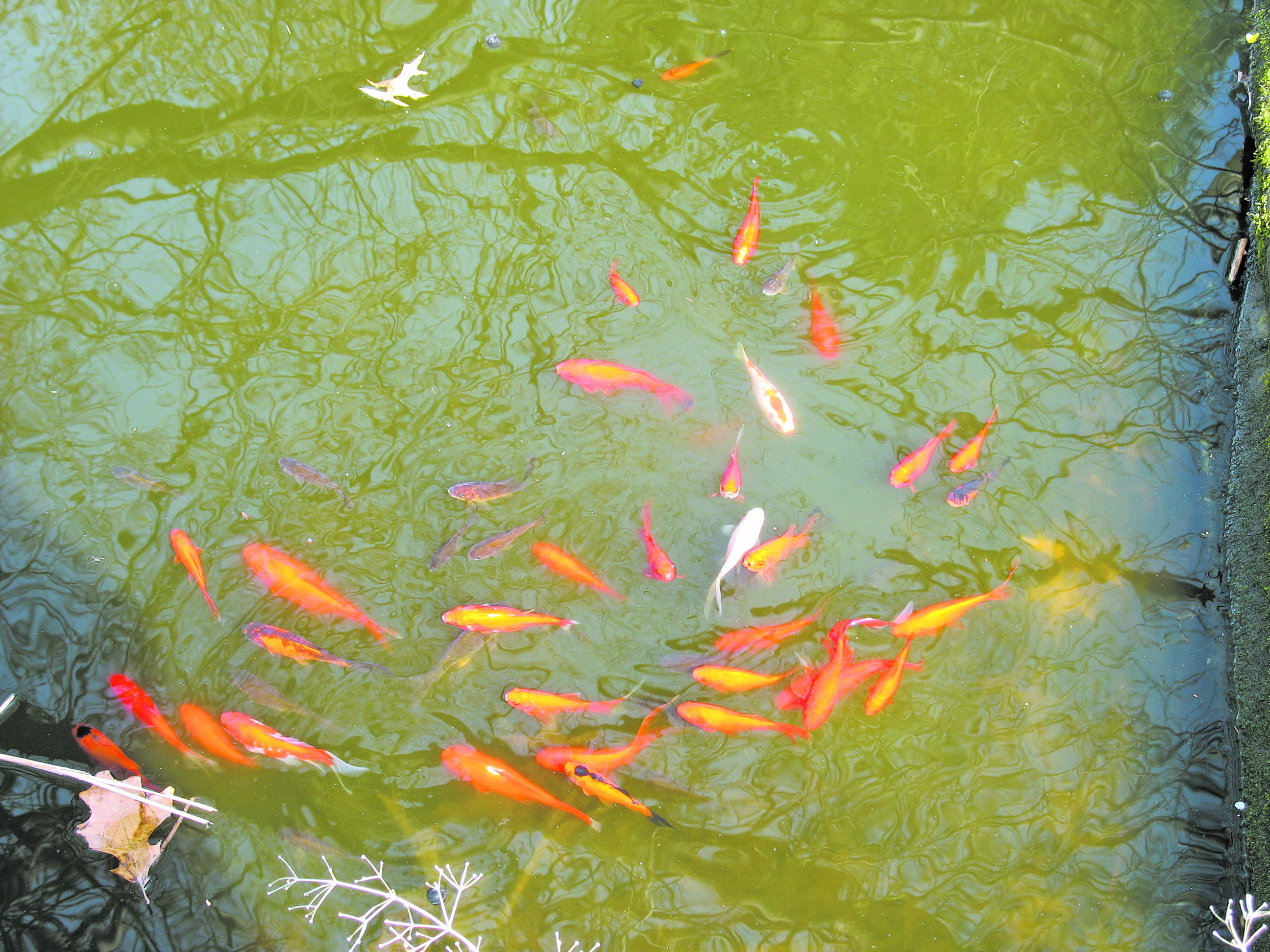Fish add serenity, but need special care

By Pam Baytos
OSU master gardener volunteer
By creating the proper environment, you can turn your water garden into a paradise for your fish. Water depth is critical to fish survival. For goldfish, a pond should be at least 3 feet deep; for koi more than 10 inches long, make it 41/2 feet deep. The proper depth allows ample unfrozen water for fish to survive should temperatures drop below freezing. A deeper pond also means the water stays cooler in warm weather, which is good for the fish because cooler water holds more oxygen. If your pond water gets too warm, your fish can suffocate.
It’s important to provide cover for fish to protect them from falling prey to wading birds, snakes, and raccoons. Deeper water provides shelter, but you can also use vegetation and stack rocks to build caves to create places in which fish can hide.
A pump is necessary to filter the water; otherwise, waste can accumulate and foul the water, which endangers the fish. Consider using the pump to create a waterfall feature. Not only does this add a wonderful sound, it helps oxygenate the water, attract birds, discourages mosquitoes and delays the formation of ice in colder climates.
Most city water sources are treated with chorine or chloramine, which can be deadly to your fish. If you know your water contains only chorine, you can fill the pond, let it set for 24 hours until the chemical has naturally dissipated, and then add your fish. If it contains chloramine, use a de-chlorinator (available at pet shops and other retailers). Make sure the product you purchase removes chloramine, not just chlorine.
Plants provide habitat for bugs, which are a natural source of food for your fish. However, you’ll need to supplement their diet with commercial fish food designed to be used in water gardens.
Exotic species are those that have been introduced by humans into places where they were not naturally found. Often such exotics pose a threat to native species because they lack predators and parasites that exist in their native habitat. They can also spread new diseases to native species. Never release into the wild fish, plants, frogs or snails that you’ve purchased, because chances are they aren’t native to your area and could become a major ecological problem in the future.
The easiest fish to care for are goldfish and koi. They are hardy, can survive in confinement, and tolerate relatively low oxygen. When deciding how many fish to have, keep in mind both species can live a long time and they’ll get larger as they age. Goldfish can get well over a foot long, and koi get even larger. Grab a refreshment, find a comfy lawn chair and enjoy a little nature in your backyard.
For details on plant selection, algae problems and more, go to: http://go.osu.edu/watergarden
 43
43
